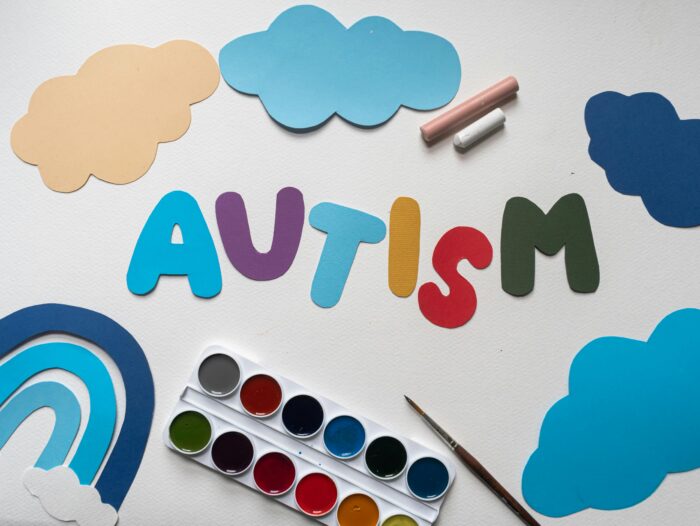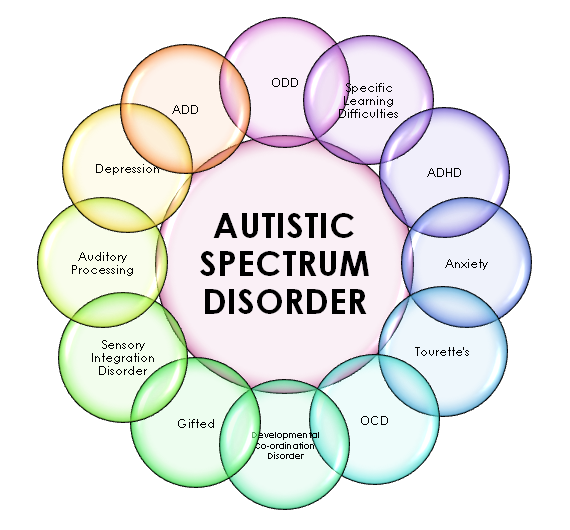Understanding the Range: A Comprehensive Overview to Autism Recognition
Understanding the Range: A Comprehensive Overview to Autism Recognition
Blog Article
Discovering Autism: Strategies for Reliable Interaction and Communication
Effective communication and interaction with individuals on the autism range necessitate a thorough understanding of their special needs and choices. Approaches such as using clear language, utilizing aesthetic supports, and promoting regular regimens can considerably improve engagement and lower anxiousness. Moreover, identifying the significance of non-verbal signs and shared passions paves the means for purposeful links. Nevertheless, the ins and outs of these strategies expose additional considerations that merit expedition, specifically in how they can be adjusted to specific experiences and varied contexts. What might these adaptations resemble in method?
Understanding Autism Spectrum Condition
Autism Spectrum Disorder (ASD) incorporates a variety of neurodevelopmental problems defined by difficulties in social communication, communication, and recurring habits. The term "range" shows the varied manifestations and differing degrees of severity experienced by people with ASD. While some might display considerable problems, others may present high-functioning attributes, enabling for better self-reliance in day-to-day live.
The onset of ASD commonly happens in very early youth, with signs typically recognizable by age 2. Early indications might include postponed speech advancement, minimal eye contact, and difficulties in understanding social cues. The precise etiology of ASD continues to be unclear, research recommends a mix of environmental and genetic factors plays a vital role in its advancement.
People with ASD commonly have unique strengths, such as heightened focus to detail and remarkable memory skills. Nonetheless, they might fight with recognizing abstract concepts and handling modifications to regular. Because of this, interventions and assistance tailored to private needs are important for fostering interaction and social skills. Acknowledging the intricacy of ASD is vital for advertising awareness, approval, and reliable techniques that assist in meaningful interactions with people on the range.

Relevance of Clear Interaction
Reliable interaction is important for promoting understanding and link, specifically for individuals with Autism Range Condition (ASD) Clear communication not just helps with social communications but additionally boosts the individual's ability to share their thoughts, emotions, and needs. For individuals with ASD, the subtleties of language can typically be testing; therefore, making use of distinct and straightforward language is essential.
Moreover, clear interaction aids lower disappointment and anxiety that might occur from misunderstandings. When messages are communicated in a regular and direct fashion, people with ASD are much better equipped to analyze details precisely, which can substantially enhance their social involvement and participation in numerous setups.
Establishing regimens and making use of visual supports can better bolster clear communication. These techniques offer individuals with predictable frameworks that aid comprehension and retention of details. In addition, actively listening and being patient throughout communications promotes an encouraging environment where people with ASD really feel valued and comprehended.
Eventually, focusing on clear communication not just empowers individuals with ASD but likewise cultivates more significant links with their peers, caregivers, and the wider area, leading the way for inclusive communications and collective partnerships. - autism
Non-Verbal Interaction Strategies
Communication extends beyond words, and for people with Autism Range Disorder (ASD), non-verbal hints play a considerable role in interactions. Non-verbal communication methods can consist of faces, gestures, body language, and eye contact, all of which offer as vital components for conveying emotions linked here and purposes.
Recognizing and analyzing these non-verbal signals can boost communications with people with ASD. A warm smile or open stance can develop an inviting environment, encouraging involvement. In a similar way, utilizing aesthetic aids-- such as image cards or signs-- can connect interaction spaces and assist communicate messages extra successfully.
It is additionally essential to be mindful of individual room, as people with ASD may have different convenience degrees concerning distance. Observing their responses to physical closeness can notify appropriate changes.

Developing Supportive Environments
Producing a supportive environment is vital for cultivating positive communications and boosting the health of individuals with Autism Range Problem (ASD) Such environments can substantially reduce anxiety and create a sense of safety and security, permitting individuals to express themselves extra freely.
To attain this, it is necessary to consider sensory sensitivities that individuals with ASD might experience. Customizing the physical room to consist of soft illumination, minimal history noise, and comfy seats can produce a calming ambience. Additionally, making use of consistent routines and clear visual schedules can help people expect changes and decrease unpredictability, further advertising comfort.
Social rooms ought to be structured to lessen frustrating stimulations while giving opportunities for engagement in preferred tasks. Promoting locations marked for quiet time can likewise function as a sanctuary throughout minutes of anxiety. Importantly, incorporating elements of option equips individuals, allowing them to work out firm in their setting.

Encouraging Social Communications
Cultivating social communications amongst individuals with Autism Range Problem (ASD) calls for willful methods that focus on useful site convenience and involvement. Developing foreseeable regimens can help in reducing stress and anxiety, making social setups a lot more friendly. Creating organized atmospheres with defined duties and responsibilities allows individuals to engage without the frustrating pressure important source of disorganized social dynamics.
Incorporating interests and staminas right into social activities can serve as a catalyst for interaction. As an example, organizing group activities around shared hobbies or subjects of attraction can help with all-natural discussions and links. Furthermore, making use of aesthetic assistances, such as social manuscripts or photographic timetables, can help in comprehending social signs and assumptions.
Modeling ideal social habits is crucial - autism. Grownups and peers need to show reliable communication strategies, including energetic listening and turn-taking. Role-playing scenarios can likewise give a safe area for individuals to practice these abilities
Finally, fostering peer partnerships via inclusive methods is crucial. Motivating comprehensive playdates or group trips can develop opportunities for socializing in a comfy setting. By executing these caregivers, techniques and teachers can considerably boost social interactions for individuals with ASD, promoting their overall social development and well-being.
Verdict
In final thought, efficient interaction and interaction methods are important for sustaining individuals with Autism Spectrum Problem. Eventually, these methods encourage people with autism to browse social landscapes, advertising their general health and enabling the development of long lasting connections.
Reliable interaction and interaction with people on the autism range require a comprehensive understanding of their special demands and choices. Clear interaction not only helps with social communications yet likewise improves the individual's capability to express their emotions, thoughts, and demands.Promoting social interactions amongst individuals with Autism Range Disorder (ASD) needs willful methods that focus on comfort and engagement. By implementing these caregivers, instructors and methods can considerably improve social interactions for people with ASD, advertising their total social advancement and wellness.
In verdict, effective communication and interaction approaches are crucial for sustaining individuals with Autism Spectrum Disorder.
Report this page